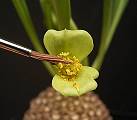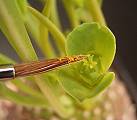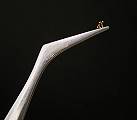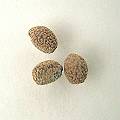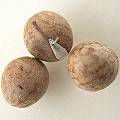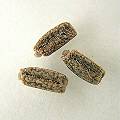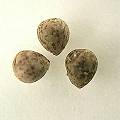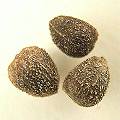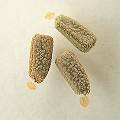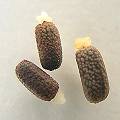

|
|
| About Euphorbiaceae
Cultivation - Producing, harvesting and sowing Seed
|
As euphorbia seeds have a limited shelf-life, they are rarely offered commercially.
Pollination can be achieved using a brush with fine hair, and transferring the ripe pollen from one cyathium (flower) to the stigma of that of another plant. Be sure to clean the brush thoroughly after use to avoid unexpected hybrids! Another way is to remove ripe stamens using fine tweezers and using them immediately to effect a pollination.
Pollination of Euphorbia bupleurifolia |
||
Taking pollen of a male plant |
Transferring pollen to the stigma |
Using tweezers |
Harvesting seeds presents a problem. The fruits of euphorbias are hard, woody capsules, made up of three segments, each containing a relatively large seed. When the capsule ripens, it explodes and scatters the seeds over amazing distances. A tried and tested method is to put a cotton pad around the ripening capsule and so prevent the seed from flying away. Nylon stockings can be used in the same way. In the case of particularly valuable seed, the whole plant can be enclosed in thin gauze or nylon.
Seed capsules |
|||
 |
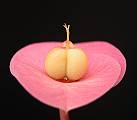 |
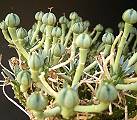 |
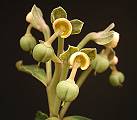 |
Euphorbia bemaharensis |
Euphorbia geroldii |
Euphorbia maleolens |
Monadenium pseudoracemosum |
A convenient and safer method to save the seed is to apply a thin layer of glue to the already ripened capsules to prevent them bursting open. Fully dried capsules can sometimes be collected whole and opened carefully from the base.
Applying a glue layer |
||
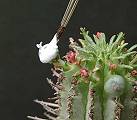 |
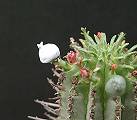 |
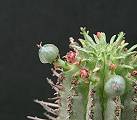 |
